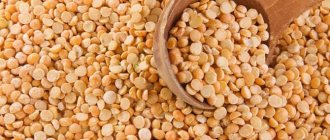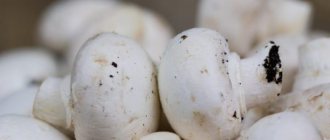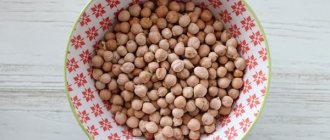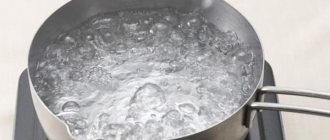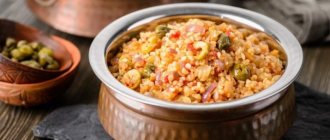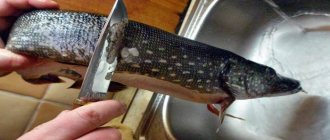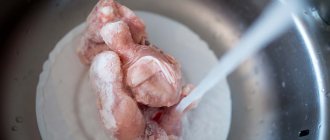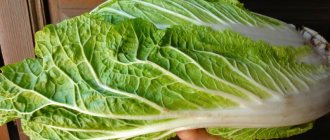What actually happens to potatoes when they are soaked in water? And who needs to do this?
Photo: Footage.framepool.com
Photo: Footage.framepool.com
Soaking vegetables is a simple and effective way to reduce nitrates. Up to 25 percent of these substances are concentrated on the surface of the peel. Being water soluble, they dissolve into room temperature water within an hour, making the product safer. An even safer option is to cut off the peel to remove up to 80 percent of the hazardous substances if you plan to eat the vegetable fresh. Or subject it to heat treatment: boil, stew, fry. In this case, there are no nitrates left in the vegetables at all.
Potatoes, unlike other vegetables, are not eaten fresh. Therefore, there is no point in soaking it to “remove harmful substances.” When boiling, baking and frying, nitrates are quickly destroyed; from this point of view, the root vegetable is absolutely safe. It is considered dubious for another reason - due to its high starch content.
When potatoes are boiled, nitrates are destroyed (Photo: Footage.framepool.com)
When potatoes are boiled, nitrates are destroyed (Photo: Footage.framepool.com)
How to soak potatoes from starch || How to soak potatoes from starch
Access is limited by court decision or on other grounds established by the legislation of the Russian Federation.
A network address that allows you to identify a site on the Internet is included in the Unified Register of domain names, page indexes of Internet sites and network addresses that allow you to identify sites on the Internet containing information the distribution of which is prohibited in the Russian Federation.
A network address that allows you to identify a site on the Internet is included in the Register of domain names, indexes of pages of sites on the Internet and network addresses that allow you to identify sites on the Internet containing information distributed in violation of exclusive rights.
Boiled, fried or baked potatoes are forbidden fruit for many. But you can make the product less caloric and get rid of nitrates. To do this, you need to soak the potatoes so that the starch and other harmful components come out.
Why are potatoes soaked?
https://www..com/watch?v=ytadvertiseru
There is an opinion that potatoes consist mainly of water and starch. If the latter is eliminated, the tuber loses all nutritional value. This judgment is incorrect, since 100 g of the product contains:
- Silicon - 50 mg, or 170% of the daily value (DV). Thanks to the microelement, the skin becomes more elastic, blood vessels - elastic, hair and nails - strong.
- Boron - 115 mcg, or 164% s/n. By maintaining the required level of boron, bones will be strong, despite age-related changes. Women during menopause need boron to improve memory, relieve stress and prevent osteoporosis.
- Vanadium - 150 mcg, or 370% s/n. Normalizes cholesterol levels in the blood, takes part in redox processes in the body. Essential for athletes and people trying to lose weight.
- Rubidium - 500 mcg, or 500% s/n. The trace element helps strengthen the nervous system, has antihistamine properties, and increases blood pressure.
In addition to substances, the content of which in 100 g covers the daily needs of the human body, potatoes contain vitamins (B6, B9, C, PP, K), microelements (cobalt, lithium, manganese, chromium), omega-3.
Potatoes contain a lot of starch. Its volume is 15–17% of the mass. It is a polysaccharide that is converted into glucose in the stomach. People with diabetes or overweight, children, and people with allergies should avoid foods that increase blood sugar levels. If starch is eliminated, consumption of the product will become possible for them.
Nutritionists advise everyone, without exception, to soak potatoes before cooking, but there are people who are strictly forbidden to eat tubers without prior processing.
Soaking potatoes allows you to:
- Reduce the glycemic index (GI). This is important for diabetics. Products whose GI does not exceed 50 are allowed for consumption. In potatoes, the index reaches 70–80 (in sugar - 75), which makes the product completely unsuitable for citizens with a diagnosed disease. One could avoid potatoes altogether, but they contain many substances that support the patient’s body. The only way to introduce tuber dishes into the diet is to eliminate starch. After soaking, the GI drops by 25–30 units.
- Reduce the allergenicity of the product. Cases of negative reactions are rare, but if they are present, there is a high risk of allergies to other nightshades: eggplants, peppers, tomatoes. In adults, allergies have many manifestations: rash, symptoms of respiratory disease, swelling. Infants suffer from rashes and colic. Once a reaction is detected, consumption of potatoes should be stopped, and after 3-4 months, resumed, using only environmentally friendly soaked product. A nursing mother should also stop eating potatoes if her child shows signs of an allergy.
- Reduce calories. 100 g of starch contains approximately 357 calories. Potatoes are 83% pure fast carbohydrates that promote weight gain, and removing starch reduces calories.
- Remove nitrates. It has been proven that soaking allows you to get rid of growth stimulants that have a detrimental effect on humans.
For consumption, you need to select whole tubers without dents or signs of spoilage. You should pay attention to the color of the peel. If it is greenish, it means that the tuber has a high concentration of a toxic substance - solanine. Even in small quantities, it causes inflammation of the gastric mucosa, destroys red blood cells, and destabilizes the functioning of the nervous system.
After selecting high-quality tubers, you need to:
- Wash and peel the tubers, cut into several pieces. If the method of growing potatoes is known and the use of nitrates is excluded, you can cook potatoes in their jackets. It must be thoroughly washed and cut into 2-4 parts depending on the size of the potato.
- Pour in water until the liquid completely covers the contents of the container with tubers. Leave to wash out the starch for 60 minutes.
- Drain the water and repeat the process: pour in, leave for an hour. Afterwards, drain.
- Fill the tubers with clean water. Starch removal time is 12 hours. Afterwards, drain the water and prepare the dish.
We suggest you familiarize yourself with how and how to clean windows after renovation.
Cooking recommendations
If eating potatoes is not associated with the occurrence of negative reactions, you can eat them every day, but not more than 200 g. People with high blood sugar, gout and young children should limit their consumption to 100 g per week. Regardless of the cooking method, it is better to soak the potatoes.
To maintain the usefulness of the product and achieve the best taste, you can use the following tips:
- To prevent the skin of the tuber in its uniform from bursting, add a couple of drops of vinegar to the water.
- To speed up cooking, add a piece of butter (margarine) to the pan.
- To make the tubers lighter, you need to add 1 tsp during cooking. lemon juice.
- Purees should be eaten fresh. During heat treatment, it loses 30% of vitamin C, and when heated again, there will be no vitamins left in it.
- To obtain tasty and crumbly boiled potatoes, you need to pour salted boiling water over the soaked tubers.
- To minimize the amount of nitrates in store-bought potatoes, it is necessary to remove the skin in a thick layer. For an environmentally friendly product, another rule is to peel it as thinly as possible, and better yet, eat it with the peel, since it contains more vitamins than a peeled tuber.
- Frozen potatoes will lose their unpleasant taste if they are consumed no earlier than a week after storage at room temperature.
- Soaked potatoes are good to eat raw. It is recommended for cancer patients, people with increased swelling, metabolic disorders, and gum disease. Grated tubers can be mixed with apples and seasoned with lemon juice and honey. An important condition is the absence of pesticides.
Potatoes allow you to diversify your menu and saturate your body with useful microelements. If according to indications the tubers are prohibited from being eaten, soaking will correct the situation. Without starch and pesticides, potatoes are good for everyone.
Rule #1
We suggest you read: How to break in tight shoes at home
After peeling and slicing, potatoes must be soaked in cold water. The water must be cold in order to draw out the starch from the root vegetable.
If the water is hot or warm, the starch will remain in the root vegetables, and the finished dish will look more like stewed potatoes. Starch prevents the potatoes from browning, so you need to get rid of it by soaking. The younger the potatoes, the longer they should be soaked.
It's best if it takes 30 minutes or 1 hour.
Rule #2
After soaking, the potatoes must be thoroughly dried. It is better if you put the potatoes in a colander and then dry them on a paper towel. Regular linen will also work. The potatoes should be dry, because excess moisture will prevent the formation of a golden brown crust. And contact of water with hot fat can cause stains on your apron or kitchen utensils.
https://www..com/watch?v=ytpolicyandsafetyru
Rule #3
The pan should be hot and the oil should be heated. You shouldn’t skimp on the oil; the potatoes should be immersed in it well. Don't forget that many people's favorite French fries are fried in a lot of boiling oil.
Rule #4
Salt and add various spices only after the potatoes are ready. If you salt the potatoes during or before frying, it will release moisture, which will prevent the formation of a golden brown crust. Once the potatoes are cooked, use a slotted spoon to place them on a plate to drain off any excess oil. Then salt and add spices.
Rule #5
Never cover potatoes while frying. To obtain a golden brown and crispy crust, potatoes should be fried in an open frying pan.
Rule #6
https://www..com/watch?v=https:accounts.google.comServiceLogin
Don't put too many potatoes in the pan. Optimally 2-3 layers. No more. Tasty recommendations: Do you want to give your prepared potatoes a piquant aroma and taste? Then fry a few cloves of garlic in hot oil before cooking. Once it's browned, take it out and add the potatoes to fry.
soak, potatoes, starch
Source: https://uborka-52.ru/vymochit-kartofel-krakhmala/
Potato allergy
A potato allergy in a child is very rare. But if it does occur, it most often occurs before the age of one year, during the period of introducing complementary foods. People can be allergic to both raw and cooked potatoes. Potato allergy symptoms range from mild to severe. They can affect the skin, respiratory system and digestive tract. A potato allergy can also cause a life-threatening reaction called anaphylaxis.
Potatoes contain a large number of chemical compounds, most often proteins (pentone and tuberine) and starch can cause allergies. Moreover, if there may be an allergic reaction to the first components, then there may be increased sensitivity to the last component, since the product is poorly digested by the body, which leads to unpleasant symptoms in the form of gas formation, constipation, etc.
An allergy to potatoes can manifest itself in the form of redness, rash, difficulty breathing, swelling of the mucous membranes, irritation in the mouth, stool disorders, loss of appetite, vomiting, stomach pain, etc. The worst option is angioedema and anaphylactic shock.
If an allergy to potatoes occurs, we cancel the product and contact a pediatrician who will prescribe enterosorbents and histamines. If a child is choking, blushes, or cannot take a breath, immediately call an ambulance.
Is there any point in soaking potatoes to remove nitrates?
What actually happens to potatoes when they are soaked in water? And who needs to do this?
Soaking vegetables is a simple and effective way to reduce nitrates. Up to 25 percent of these substances are concentrated on the surface of the peel.
Being water soluble, they dissolve into room temperature water within an hour, making the product safer. An even safer option is to cut off the peel to remove up to 80 percent of the hazardous substances if you plan to eat the vegetable fresh.
Or subject it to heat treatment: boil, stew, fry. In this case, there are no nitrates left in the vegetables at all.
Potatoes, unlike other vegetables, are not eaten fresh. Therefore, there is no point in soaking it to “remove harmful substances.” When boiling, baking and frying, nitrates are quickly destroyed; from this point of view, the root vegetable is absolutely safe. It is considered dubious for another reason - due to its high starch content.
When potatoes are boiled, nitrates are destroyed (Footage.framepool.com)
Risk of high blood glucose
Starches are a group of substances that, when digested in the body, turn into glucose. Potatoes of any type contain a lot of starch, which is why they are considered controversial products.
On the one hand, frequent consumption of potatoes increases the risk of diabetes, hypertension and obesity (this is confirmed by scientific research).
On the other hand, potatoes are a valuable source of potassium, the content of which surpasses other vegetables and even fruits.
It also contains polyphenols - biologically active substances that can resist cancer and reduce the harmful effects of free radicals.
And finally, potatoes are a tasty and affordable product. When other vegetables are significantly more expensive, people are more willing to buy potatoes, which they use to prepare hearty everyday meals.
Potatoes contain starch, potassium, polyphenols (Pixabay.com)
Soaking the potatoes before cooking allows you to find a balance between the harm of starch and the benefits of the biologically active substances of the root vegetable.
Potato soaking technique
During soaking, the starchy masses are partially washed out of the tubers. They come out of the root pulp and concentrate on the surface. The longer the tubers are in water, the more starch they lose. To get rid of starchy compounds, proceed as follows.
- Wash the potatoes, peel them or leave them in them.
- Cut the tubers into four parts.
- Fill with cold running water until it just covers the pieces.
- Leave for an hour, drain the water.
- Fill with water for another hour, drain, and rinse the potatoes.
When soaked, potatoes lose most of their starches (Kakxranit.ru)
There are especially a lot of starchy substances in last year's potatoes: during storage, the composition of the pulp changes. The root vegetable produces starches to provide nutrition to the sprouts. There is practically no starch in new potatoes, so there is no need to soak them.
Starch is not as harmful as it seems
Recently, nutritionists have recommended reconsidering our attitude towards starchy foods. Indeed, when they are consumed, blood sugar levels increase. But they satiate well and create a long-lasting feeling of satiety, which is useful for weight control and dieting, as it protects against sudden attacks of hunger.
In addition, the starches in vegetables and grains are different. Simple ones, which are found, for example, in boiled corn and mashed potatoes, are quickly broken down by the body into glucose.
But there are complex ones, the so-called resistant ones, they are found in cereal products and whole wheat pasta. With resistant starch, the body has to “tinker” and spend more energy on digestion.
Its breakdown takes a long time - over three to four hours, due to which the glucose level rises slowly and decreases just as slowly.
Mashed potatoes contain the most simple starch (Pixabay.com)
Resistant starch is good for the body. Products containing it do not cause a sharp increase in sugar levels and create a long-lasting feeling of satiety.
Potatoes can be a source of resistant starch even without soaking. To do this, you need to prepare it and put it in the refrigerator for 24 hours. In the cold, the structure of starchy compounds changes; the volume of substances resistant to breakdown increases fourfold.
So the healthiest potatoes are yesterday's potatoes, boiled or baked. When fried, starch is also converted into resistant starch, but the high fat content negates the benefits of the product.
Source: https://ura-povara.ru/journal/est-li-smysl-v-vymachivanii-kartoshki-chtoby-ubrat-nitraty/
Finger food potatoes
Babies have a natural curiosity and need to explore. Why not take advantage of this when serving baby food? Help your baby develop a strong grip by offering finger food and self-feeding food.
For example, white potatoes mixed with flattened peas are a good finger food option. This is done very easily. Pour steamed peas, which have previously been mashed, into the mashed potatoes. This consistency will help develop hand motor skills while the child tries to fish the green peas out of the white potato mass. It's also worth trying mixing carrots, broccoli, green beans, and any other colorful food into your mashed potatoes.
Potato pieces can be given when you are sure that the child will not choke. It is worth choosing a crumbly potato variety that is well cooked. Give the pieces small so that they can be swallowed.
We eat deliciously. Annabelle Carmel.
Superfood for your child from 0 to 2 years. Ruth Yaron
Superfood for your child from 0 to 2 years. Ruth Yaron
Superfood for your child from 0 to 2 years. Ruth Yaron
How to reduce starch in potatoes
Not many people know whether people with diabetes can eat potatoes. Diabetics should be very careful when choosing their own diet. After all, eating the right foods can even slow down the progression of the disease.
When choosing certain products, diabetics should rely on what vitamins and microelements they contain. It is imperative to take into account the effect of a particular product on changes in blood sugar levels.
Action of carbohydrates
But sometimes disputes over the use of potatoes by diabetics still arise due to the special effect of carbohydrates on the patient’s body. Carbohydrates are divided into simple and complex:
- Simple. The human body absorbs this substance quite easily. After entering the blood, it begins to change the amount of sugar in it, increasing it.
- Complex (polysaccharides). They are absorbed much more slowly, and some of their components may not be accepted by the body. This element is found in corn, cereals, and potatoes. With abundant consumption of junk food, fat reserves increase in the human body, which is undesirable not only for diabetics, but also for people who do not have such a disease.
The human body, both healthy and sick, needs the right amount of carbohydrates in its daily menu. This useful component is found in fruits, legumes, vegetables, and also in cereals. But people diagnosed with diabetes should be extremely careful when consuming various foods, such as potatoes.
Can you eat potatoes if you have diabetes?
Regarding whether people with diabetes can eat potatoes, the opinion of experts is unanimous - this vegetable is allowed to be eaten, but in small quantities.
In general, potatoes are a very healthy food product that contains a lot of different vitamins. However, it contains a significant amount of polysaccharides, so diabetics should introduce it into the daily menu with extreme caution (about 250 g per day).
But in addition to calculating the amount of potatoes, they must be prepared in certain ways. Nutritionists say that the method of preparing this vegetable has a direct impact on the patient’s well-being.
Since diabetes mellitus is often accompanied by disruptions occurring in the digestive system, experts recommend that diabetics always adhere to the rules regarding food preparation.
How to reduce the carbohydrate content in potatoes?
Soaking potatoes significantly reduces their starch content. In addition, this process has a beneficial effect on the digestive system. To reduce the amount of starch in potatoes, the peeled vegetable must be rinsed under running water.
Soaked tubers will improve digestion, and the stomach will stop producing a substance that increases blood sugar. Soaking is done as follows:
- The vegetable is peeled and then thoroughly washed.
- It is placed in a dish (saucepan, bowl) and filled with cool water.
- Potatoes are soaked in cold water for about 11 hours.
During this time, most of the starch and other elements that are undesirable and even harmful for people with diabetes will be released from the potatoes. For greater health benefits, it is better to steam waxes processed in this way.
What are the best ways to cook potatoes for diabetics?
In uniform. For people suffering from diabetes, it is most beneficial to eat boiled potatoes in their jackets.
Fried. Fried potatoes and chips cooked in vegetable oil are allowed in minimal quantities. But it’s better not to eat potatoes fried in animal fat at all.
- Baked potato. If you have type 2 diabetes, it is useful to eat baked potatoes, which can be cooked either in the oven or in a slow cooker. But it is not advisable to eat baked potatoes on their own. It is better to add a side dish to this dish, for example, a salad of fresh vegetables. You should also know that one medium baked potato contains 145 calories. This should be taken into account when creating a diet for diabetics. It is also recommended to constantly include this baked vegetable in the menu as a preventive measure for heart and vascular diseases.
- Boiled. This cooking option is best for diabetics. A standard serving of boiled potatoes contains approximately 114 calories. Such a dish has the same effect on the change in sugar content as fruit juices without sugar and whole grain bread with bran.
- Puree. People suffering from diabetes should not eat crushed boiled potatoes. Interestingly, mashed potatoes significantly increase glucose levels, just like sweets or Coca-Cola. In particular, sugar increases if the dish is cooked in oil rather than water.
Source: https://doc-diabet.com/diabet/kak-umenshit-krahmal-v-kartofele.html
Freezing potatoes
I do not recommend freezing potatoes, especially for a child. Many people write on the Internet that raw potatoes acquire a sweet taste after freezing and thawing. Honestly, no, it doesn’t, especially if it’s in mayonnaise with garlic, it’s baked normally and it turns out delicious. I freeze potatoes into a complete adult meal and do this to save my time, like meat french. But when I cook for a child, I soak the potatoes for several hours, why freeze them after that? This is not a product that should be stored in the freezer and then taken out and cooked some more. Peeling one potato only takes 1 minute, I don’t mind the time for the child. But the meat in French is cooked for about an hour, and then baked.
Also, do not freeze mashed potatoes, they will become too watery.
Why soak potatoes - Delicious!
Life without potatoes is not life. Imagine how many amazing dishes we would lose if potatoes were removed from cooking! Unfortunately, fewer and fewer people grow their own crops and more and more people buy this delicious product in stores. However, the quality of such potatoes leaves much to be desired...
Experts recommend that all purchased potatoes be soaked in water before cooking. These recommendations especially apply to people with allergies, diabetics and young children. Why do you need to soak potatoes , what is the reason for this and how to do it correctly, find out from this article.
Why soak potatoes?
Tubers should be soaked for the following reasons:
- As you know, potatoes are a starchy vegetable , and starch is a strong allergen. There is especially a lot of starch in new potatoes. This polysaccharide is converted into glucose in the stomach, which increases blood sugar levels . For people who are overweight and have diabetes, this reaction can cause a lot of suffering.
- Starch feeds pathogenic flora in the intestines, such as candida fungus , which often leads to constipation or diarrhea. Soaking potatoes allows you to get rid of most of the starch, remove nitrates, and make the product less high in calories and more healthy. At the same time, the organoleptic characteristics of the product are improved: after cooking, mashed potatoes become airy and not paste-like.
- For people suffering from kidney disease and undergoing hemodialysis, eating potatoes that have not been pre-soaked is strictly contraindicated. Elevated levels of potassium in the body (hyperkalemia) can be dangerous to health and life.
How and how long to soak potatoes?
- Clean the tubers from stains and completely remove problem areas. green potatoes immediately, as they contain the toxic substance solanine, which even in small quantities causes inflammation of the stomach mucosa, destroys blood cells and disrupts the functioning of the nervous system.
- Remove the peel, wash, cut the vegetable into cubes, and cover with warm water for at least 2 hours. The liquid should completely cover the contents.
- Then change the water and repeat the process.
Fill with water again, adding a little salt and ascorbic acid. If you are using homemade potatoes and you are sure that no nitrates were used when growing them, then you can cook potatoes in their jackets. - The finer you cut the potatoes (for example, grate them), the faster the starch will release.
If you plan to cook the whole tubers, it is better to fill the potatoes with clean water in advance and leave them overnight, since the starch removal time is 12 hours.
How to cook potatoes properly
In starchy plant foods, which include potatoes, when heated above 120 degrees, acrylamide - a dangerous carcinogen that leads to hormonal imbalances, cell mutations and cancer in animals and people. The substance is created by a chemical reaction when you fry or bake potatoes. Therefore, it is preferable to steam, stew or boil the vegetable.
However, there is good news for chips and french fries lovers! Scientists published the results of a study in the journal Science of Food and Agriculture, which showed that pre-soaking potatoes in water reduced acrylamide concentrations by 48%. Provided that the product is cooked until it turns light golden brown and not brown.
In any case, potatoes must be soaked before cooking. To maintain the benefits and improve the taste of the product, follow a few tips:
- When you boil jacket potatoes, add 1 tsp to the water. vinegar or lemon juice to prevent the peel from bursting.
- The vegetable will cook faster if you add a piece of butter or margarine to the pan.
- Cook the puree as much as you eat at a time: during heat treatment, a third of the vitamins are lost, and when reheated, none remain at all.
- To reduce nitrate levels in store-bought potatoes, cut off the skins in thick layers. Homemade potatoes are the opposite - peel them as thinly as possible and eat with the skins on.
- Frozen potatoes will become tasty again if you keep them at room temperature for a week.
- Soaked potatoes are healthy even when eaten raw. Make it into a salad with apple, lemon juice and honey. It is recommended for cancer patients, metabolic disorders, gum disease and increased swelling.
Surprisingly, you can successfully lose weight on a potato diet, as confirmed by the experience of Australian Andrew Taylor. If you have no contraindications to consuming this product, then you can eat it every day, but not more than 200 g. People with high blood sugar, gout and small children should reduce potato portions to 100 g per week.
Source: https://vkusnoinfo.ru/zachem-vymachivat-kartofel/
History of potatoes
It’s hard to imagine that several thousand years ago no one even thought about the existence of potatoes. But it was first mentioned about 9-7 thousand years ago on the land where Bolivia is now located. Its introduction into agricultural culture began through the use of lush thickets. And the Indians not only used it, but also considered it an animate object and prayed to it.
In the European world, potatoes were adopted in the 16th century, and were considered poisonous and also decorative. But thanks to an agronomist from France, Antoine-Auguste Parmentier, the discovery was made that potatoes have an excellent taste and a lot of nutrients. This discovery helped fight famine in France.
Potatoes appeared in Russia a little later, in the 17th century. Peter the Great brought a bag of tubers of this product to the capital of the Russian Empire from Holland to popularize it in the provinces for its cultivation. However, potatoes did not gain fame immediately. At first, the product was considered an exotic vegetable, and it was served only in rich families. And then, after some time, gradually displacing turnips from the diet of peasants, potatoes were accepted throughout Russia.
If you soak potatoes in cold water
Boiled, fried or baked potatoes are forbidden fruit for many. But you can make the product less caloric and get rid of nitrates. To do this, you need to soak the potatoes so that the starch and other harmful components come out.
Are soaked potatoes healthy?
There is an opinion that potatoes consist mainly of water and starch. If the latter is eliminated, the tuber loses all nutritional value. This judgment is incorrect, since 100 g of the product contains:
- Silicon - 50 mg, or 170% of the daily value (DV). Thanks to the microelement, the skin becomes more elastic, blood vessels - elastic, hair and nails - strong.
- Boron - 115 mcg, or 164% s/n. By maintaining the required level of boron, bones will be strong, despite age-related changes. Women during menopause need boron to improve memory, relieve stress and prevent osteoporosis.
- Vanadium - 150 mcg, or 370% s/n. Normalizes cholesterol levels in the blood, takes part in redox processes in the body. Essential for athletes and people trying to lose weight.
- Rubidium - 500 mcg, or 500% s/n. The trace element helps strengthen the nervous system, has antihistamine properties, and increases blood pressure.
In addition to substances, the content of which in 100 g covers the daily needs of the human body, potatoes contain vitamins (B6, B9, C, PP, K), microelements (cobalt, lithium, manganese, chromium), omega-3.
Potatoes contain a lot of starch. Its volume is 15–17% of the mass. It is a polysaccharide that is converted into glucose in the stomach. People with diabetes or overweight, children, and people with allergies should avoid foods that increase blood sugar levels. If starch is eliminated, consumption of the product will become possible for them.
How to soak potatoes before cooking?
For consumption, you need to select whole tubers without dents or signs of spoilage. You should pay attention to the color of the peel. If it is greenish, it means that the tuber has a high concentration of a toxic substance - solanine. Even in small quantities, it causes inflammation of the gastric mucosa, destroys red blood cells, and destabilizes the functioning of the nervous system.
After selecting high-quality tubers, you need to:
- Wash and peel the tubers, cut into several pieces. If the method of growing potatoes is known and the use of nitrates is excluded, you can cook potatoes in their jackets. It must be thoroughly washed and cut into 2-4 parts depending on the size of the potato.
- Pour in water until the liquid completely covers the contents of the container with tubers. Leave to wash out the starch for 60 minutes.
- Drain the water and repeat the process: pour in, leave for an hour. Afterwards, drain.
- Fill the tubers with clean water. Starch removal time is 12 hours. Afterwards, drain the water and prepare the dish.
The smaller the potatoes are cut before soaking, the easier the starch will come out of them. The processing time can be reduced by 4 times if you grate the tubers on a coarse grater before the procedure.
Pesticides and potatoes
If, when pressed with a fingernail, the peel breaks easily, and there is moisture at the place where the nail marks were, then this means that the potatoes were grown with the help of nitrates. If you hear a crunch, then the potatoes are quite safe and can be taken.
Potatoes receive their first dose of pesticides, herbicides and insecticides from growers when they are grown. These substances help get rid of weeds, insect pests, irritants of various diseases and fungi. Nitrates are also used for larger plant volume and faster growth. And to improve its appearance, it is simply washed.
Ready-made baby food from potatoes
Ready-made baby food offers potatoes in the form of mixes with other vegetables, meat or fish. Pure mashed potatoes can only be found from Hipp and Gerber.
Then the most common vegetable combination is zucchini and potatoes; this type of baby puree is offered to us by such manufacturers as Semper, Fleur Alpine, Hipp, Frutonyanya, Gerber. Moreover, such companies as Fleur Alpine, Hipp add rice flour and rapeseed oil to this baby puree, in addition to the stated vegetables. There is also a combination of cauliflower and potatoes in Fleur Alpine and Gerber, corn and potatoes in Semper, and pumpkin and potatoes in Hipp. An interesting combination is offered by the baby food manufacturer Bibikol:
- zucchini, potato and goat's curd;
- pumpkin, potatoes and goat's curd.
But we carefully read the composition of baby purees, since this manufacturer added rice flour and apple to these purees.
They also sell a lot of assorted vegetables with potatoes from different baby food manufacturers, for example:
- Assorted vegetables Hipp, 125 grams,
- Heinz vegetable mix, 120 grams,
- Sweet vegetable puree Marmaluzi, 125 grams.
Often they try to combine potatoes with meat and fish. Basically, we are offered something similar to stew or soup and borscht, as well as fish cutlets with mashed potatoes or fish soups, but all this is offered in the form of a homogeneous consistency. Basically, almost all jars are 120 grams or more. The minimum dosage of 80-100 grams is found in Frutonyanya and 100 grams in Babushkino Lukoshko.
Let's look at some examples of baby meat and potato purees .
Let me remind you that we carefully read the composition of such multi-ingredient children's dishes, because manufacturers add herbs (basil, dill, parsley), oil (rapeseed, olive, corn, etc.), natural thickeners (rice or oatmeal) to add flavor. spices (pepper and salt), foods that have not yet been introduced into the baby’s complementary foods (spinach, leeks, etc.). Therefore, if the composition contains at least one unfamiliar product for the baby, then this baby puree must be introduced into the child’s diet as a new product within 4-7 days.
Hipp
- Vegetable cream soup with chicken, 190 grams;
- New potatoes and green beans with rabbit;
- Vegetable mixture with beef, 220 grams;
- Potatoes with rabbit and fennel;
Marmaluzi
- Vegetables with beets and tongue, 125 grams
- Vegetable stew with beef;
- Vegetable puree with chicken meat;
Gerber
- Home-style turkey;
Heinz
- Country-style veal;
- Peasant style beef, 120 grams;
- Vegetable stew with turkey;
- Pumpkin sauté with chicken, 120 grams;
Babushkino Lukoshko
- Turkey/vegetables, 100 grams;
- Beef/vegetables;
Semper
- Vegetables with turkey meatballs, 190 grams
- Potato stew with beef;
- Potato and vegetable stew with chicken;
- Vegetables with rabbit in cream sauce;
- Vegetables with veal liver;
- Vegetables with beef meatballs;
- Mashed potatoes with vegetables and veal;
- Vegetables with lamb;
Frutonyanya
- Turkey/vegetables, 100 grams;
- Chicken/vegetables;
- Beef/vegetables;
And now some more baby purees with fish and potatoes :
Heinz
- Hake with potatoes;
- Vegetables with trout;
Babushkino Lukoshko
- Chum salmon/vegetables;
- Pike perch/vegetables;
- Sockeye salmon/vegetables;
- Pink salmon and potatoes;
- Salmon/vegetables
Semper
- Vegetable stew with cod fillet, 190 grams;
- Sauteed vegetables with sea bass;
- Potatoes with flounder;
- Mashed potatoes with salmon in cream sauce, 190 grams;
Marmaluzi
- Mashed potatoes with fish pieces, 190 grams.
In principle, potatoes are found in almost all well-known baby food manufacturers; the names listed above are not a complete list.
Foods that go well with potatoes:
- Carrot,
- Green bean
- Parsnip,
- Peas,
- Zucchini,
- Pumpkin,
- Butter,
- Lentils,
- Chicken,
- Beef,
- Pork.
Herbs and spices that perfectly complement the taste of potatoes:
- Garlic,
- Onion,
- Black pepper,
- Mint,
- Dill,
- Parsley,
- Thyme,
- Caraway,
- Turmeric.
We are not afraid and add me to Odnoklassniki and Instagram!
Did you like the article? Subscribe to site updates
"Encyclopedia of Baby Food"!
Don't forget to bookmark us! (CTRL+SHiFT+D) Subscribe to the site, comment, share on social networks.
On our website Encyclopedia Baby Food there is useful information on the nutrition of your children, which is useful for everyone, and we update the Encyclopedia Baby Food website constantly and try to search and write only excellent, verified and necessary information for you and your children.
Disclaimer #1: It is necessary to understand that the author of the articles on the Encyclopedia Baby Food website is not a medical professional, “I am not a doctor.” The information I share is based on my own experience. My goal is not to teach you how to eat or feed your child, but to tell you about what we did, what new things I learned or read. This allows you to expand your knowledge about baby food, allows you to see the whole process so that you can decide whether you like it or whether it’s worth doing the same.
Disclaimer #2 : However, the above does not replace visiting your pediatrician. Before you start complementary feeding, you should seek his professional opinion on the best way to introduce new foods to your baby. Please also note that you need to look at the original date of published articles, as some “best practices” may have changed. Always consult your child's pediatrician about complementary feeding and his or her health.
Disclaimer #3: Keep in mind that every family is unique, and every situation is completely unique. There are no universal solutions. Only you can find what works best for you. Certain goals require certain sacrifices and priorities—not everyone wants to make those choices, and that's GREAT! Just know what you want to achieve and be ready to get to work doing your best!
Disclaimer No. 4: The Encyclopedia Baby Food website uses photos from books on baby food with attribution for a more complete understanding of the information (Article 1274, paragraph 1, part four of the Civil Code of the Russian Federation). Literature on baby nutrition was found freely available on the Internet.
Apricot puree with chicken Banana-apple puree Banana puree Borscht Broth with peas and rice Kohlrabi sandwich Quick dessert made from ready-made dough Zucchini jam with strawberries Buckwheat with green peas Buckwheat porridge Buckwheat porridge with apricots Buckwheat porridge with banana Buckwheat pilaf Children's sausage Children's milk porridge with banana Children's vinaigrette Children's ketchup Children's cucumber salad Children's Olivier salad Children's porridge cookies Children's puree of strawberries, banana, yellow cherries, matsoni and cookies with cereals Children's puree with cottage cheese and fruit Homemade yeast bread with flaxseed flour Homemade pizza Breakfast on the street Snack from kohlrabi Baking cauliflower Baked carrots Baked carrots and cherries with millet Winter salad with Jerusalem artichoke Cabbage with white beans Cabbage salad as in the cafeteria Mashed potatoes Quinoa and pumpkin porridge Porridge Quinoa porridge for breakfast Quinoa and apple Strawberry puree Strawberry puree with banana Strawberry compote Compote from wild apples and raspberries Compote of dried fruits steamed in a thermos" for a child over 8 months Corn porridge Corn porridge with pear Corn porridge with pumpkin Corn porridge with pumpkin and carrots Corn porridge with apple and carrots Chicken cutlets with carrots Chicken with carrots, sweet peppers and potatoes Navy-style pasta Pasta with orange sauce Milk noodle soup Carrot and potato puree Carrot and rice casserole Carrots with chicken Fly agarics made from eggs and tomatoes Vegetable puree from cauliflower and carrots Vegetable soup with corn semolina Vegetable soup with cheese and corn semolina Vegetable cream soup with bell pepper Oatmeal Pancakes with hot kefir Omelette in a bag Omelette with broccoli and cauliflower Omelette pancake Peach puree Baked apples 7 months + Zucchini and carrot pie Zucchini pie Rice and zucchini pie White cabbage pizza Rabbit pilaf Chicken pilaf with green peas and corn Banana and cherry puree Banana, cottage cheese and porridge puree 4 grains Broccoli (cauliflower) puree Broccoli, zucchini and cauliflower puree Blueberry puree Pear puree Pear and banana puree pear and banana, baking Pear and pumpkin puree 7 months + Pear, pumpkin and peach puree Pear, apple, plum and prune puree Turkey puree Zucchini puree Zucchini and broccoli puree Zucchini, carrot and potato puree Quinoa puree and banana Quinoa and carrot puree Quinoa, banana and carrot puree Quinoa, zucchini and carrot puree Quinoa, peach and raspberry puree Quinoa, cauliflower, apple, pea and mint puree Quinoa, apple, pear and raisin puree quinoa, apple, carrot puree rabbit, broccoli and cauliflower puree chicken, carrot, potato, apple and pea puree raspberry, cherry and banana puree carrot puree carrot and apple puree carrot, potato, broccoli puree with cheese puree from carrots, potatoes, apples and quinoa Carrot, pumpkin, apple and prune puree Carrot, apple and potato puree Turnip and carrot puree Plum puree Cottage cheese, strawberry and banana puree Pumpkin puree Pumpkin and banana puree Pumpkin puree and zucchini Pumpkin and apple puree Pumpkin, apple and banana puree Cauliflower and broccoli puree Cauliflower and potato puree Cauliflower and rice puree Cauliflower and apple puree Cauliflower, green pea and zucchini puree Cauliflower puree cabbage, turkey and potatoes pureed cauliflower, potatoes and zucchini pureed cauliflower, carrots and broccoli pureed cauliflower, carrots, cheese and rice pureed cauliflower, apples and zucchini pureed zucchini pureed zucchini and potatoes pureed zucchini , carrots and apples Cherry puree Blueberry puree Prune puree Apple, pumpkin, carrot puree and a little curry Apple and pear puree Apple and strawberry puree Apple, strawberry and cherry puree Apple, peach and banana puree Carrot puree with pumpkin Cottage cheese and banana puree Turkey, potato and carrot ragout Zucchini, carrot and broccoli ragout Fish, potato, carrot and broccoli ragout Rice porridge Whole grain rice porridge Rice porridge with carrots Rice porridge with pumpkin Rice porridge with apples Rice porridge with apple and pear Rice porridge with apple and pumpkin Fish cutlets with vegetables Semi-finished fish Fish balls with ketchup Fish soup for children Fish soup with salmon and celery Carrot and kohlrabi salad Chickpea salad The laziest soup Creamy kohlrabi puree soup Smoothie with oatmeal One Pot Sauce Pea and Bacon Soup Roasted Vegetable Soup Kohlrabi Soup Salmon Soup Cauliflower Soup Potato and Turnip Soup Meatball Soup for the Picky Eater Cream of Rabbit, Pumpkin, Potato, Broccoli and Cauliflower Soup Cream of Soup beets Pumpkin puree soup with mushrooms Broccoli and celery puree soup Pork soup/stew with potatoes and carrots Cheese pasties Pumpkin cheese sauce (Annabelle Carmel's recipe) Pumpkin-apple puree Pumpkin-apple juice Pumpkin cake Pumpkin puree soup Fruit salad Fruit salad with mango Bread lavash Cauliflower with cheese Linden and thyme tea Experimental puree soup with noodles and lentils Applesauce Apple juice

